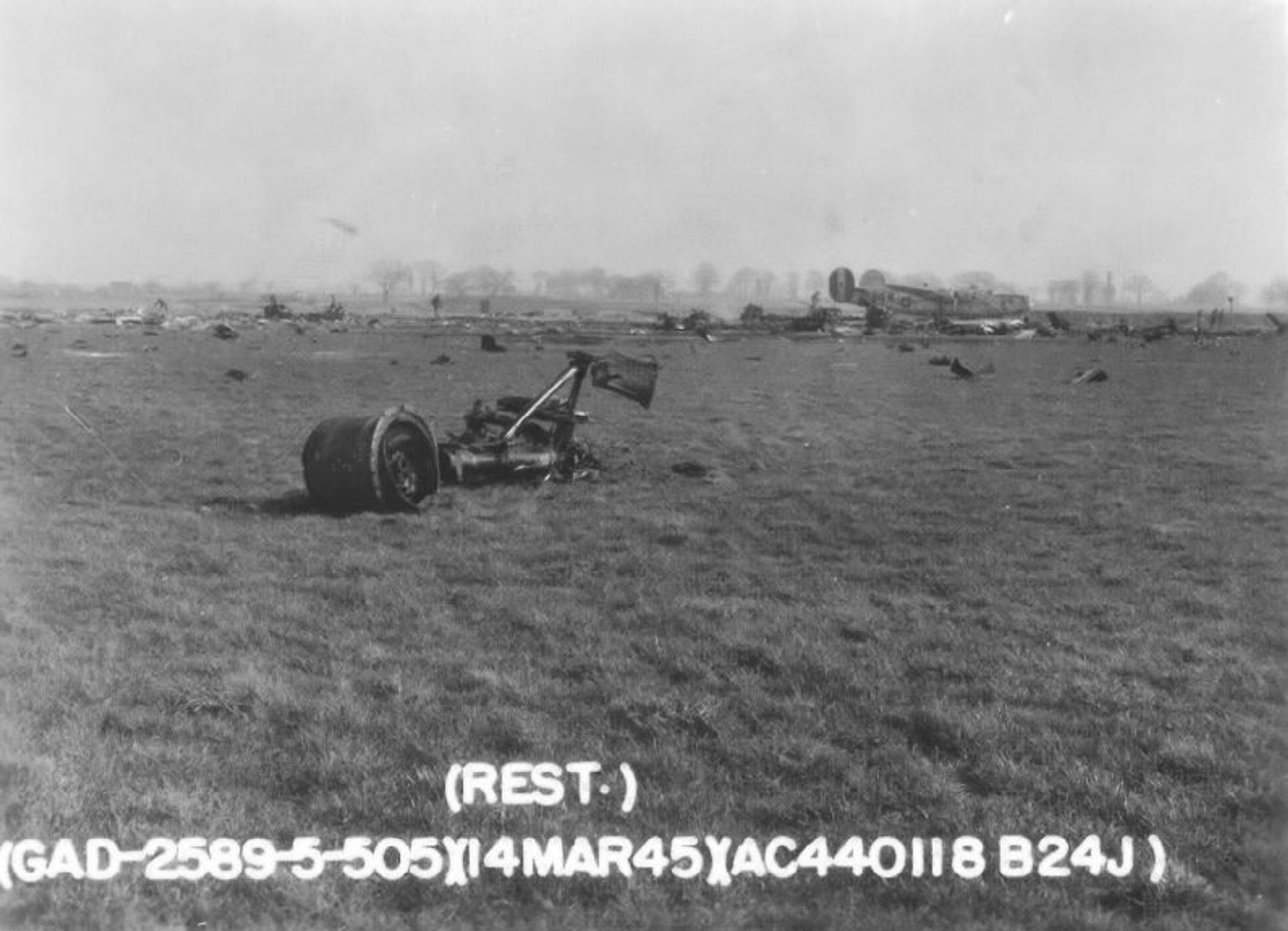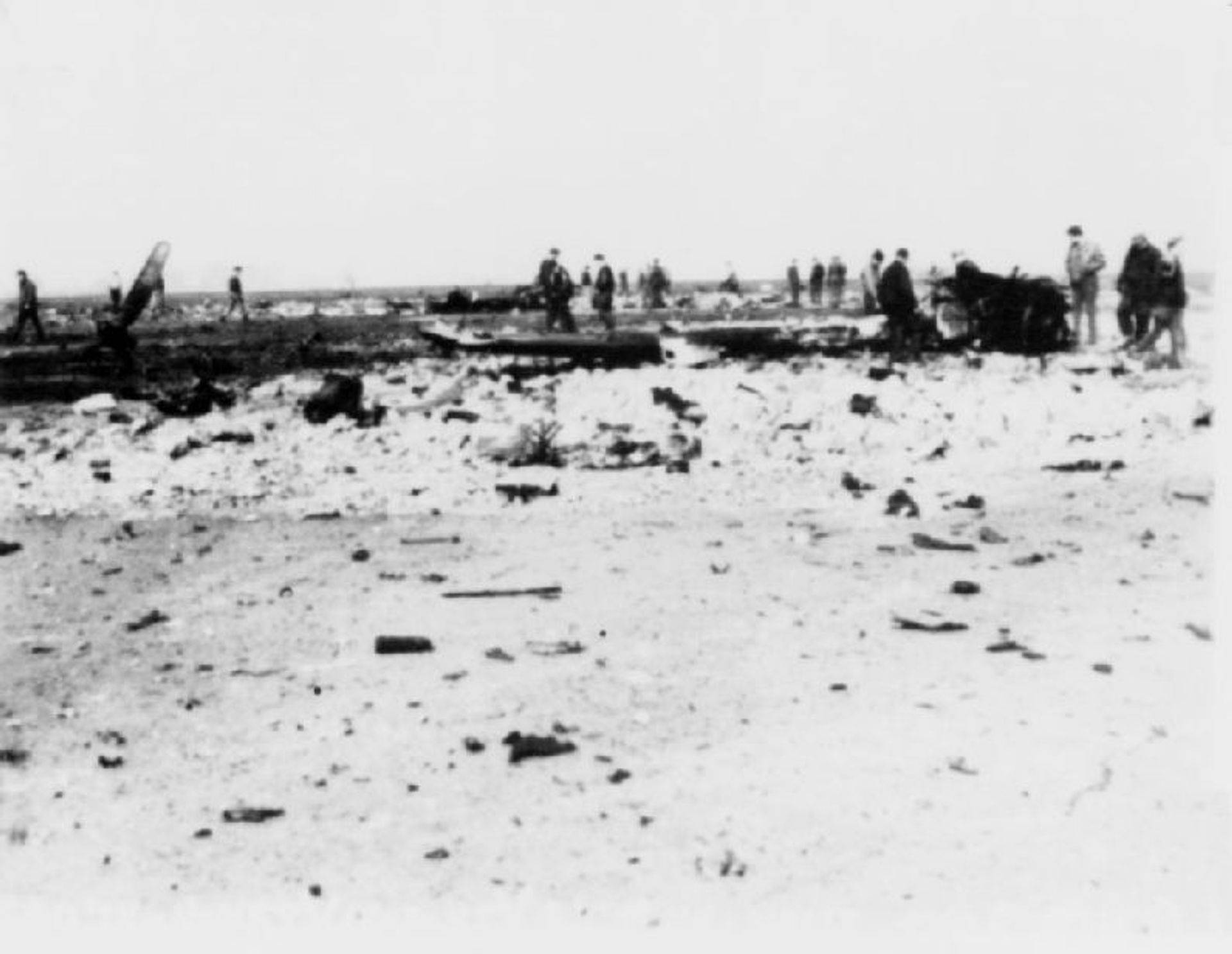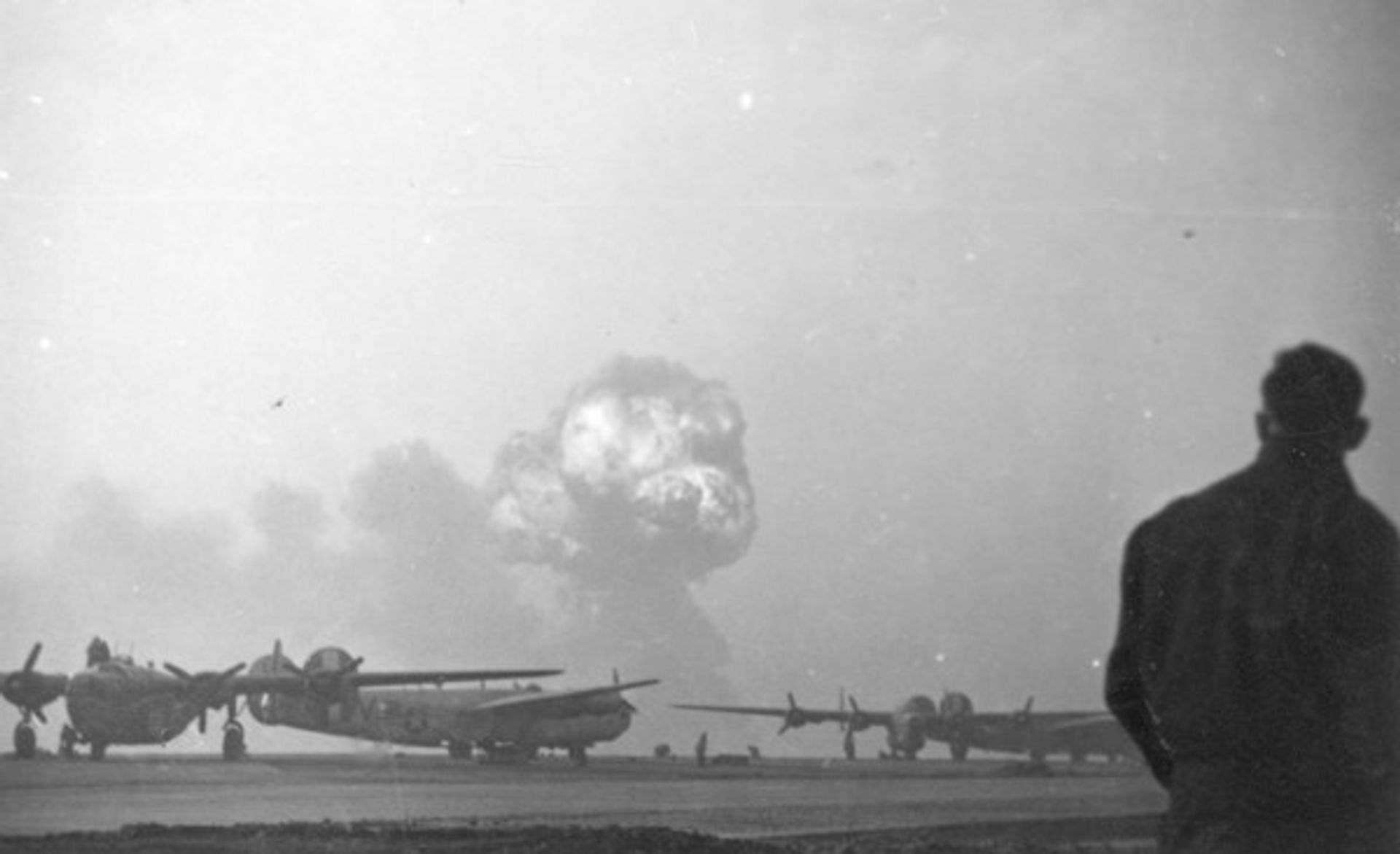458th Bombardment Group (H)
Friendly Fire
March 14, 1945
Accident Report 45-3-14-535
DESCRIPTION OF ACCCIDENT
The waist gunner, S/Sgt Jack L. Pettyjohn, 37521828, of aircraft B-24J, 42-50555 carelessly failed to check closely for ammunition in his gun before pulling the trigger. Several rounds went off which ricocheted into the bomb bay and left wing tank, of a nearby airplane, igniting an incendiary bomb and gas tanks, which set the airplane afire, exploding the bomb [load] which completely destroyed the airplane and caused various degrees of damage to nine other aircraft. When smoke and fire appeared from the airplane, the fire truck proceeded immediately to the scene and attempted to extinguish the fire for about two minutes, whereupon the bomb disposal officer stated that the time limit had expired and that all personnel should abandon the area because of danger of the bombs exploding.
The gunner has had 32 combat missions, and is fully aware of the proper method in checking his gun. He is entirely responsible for the accident, in that he admittedly failed to check for ammunition over the belt holding pawl.
RECOMMENDATION:
It is recommended that gunners remain more alert in checking their guns, and that gunnery officers continue to brief the gunners prior to each mission on the proper methods of checking their guns.

Friendly Fire? (1)
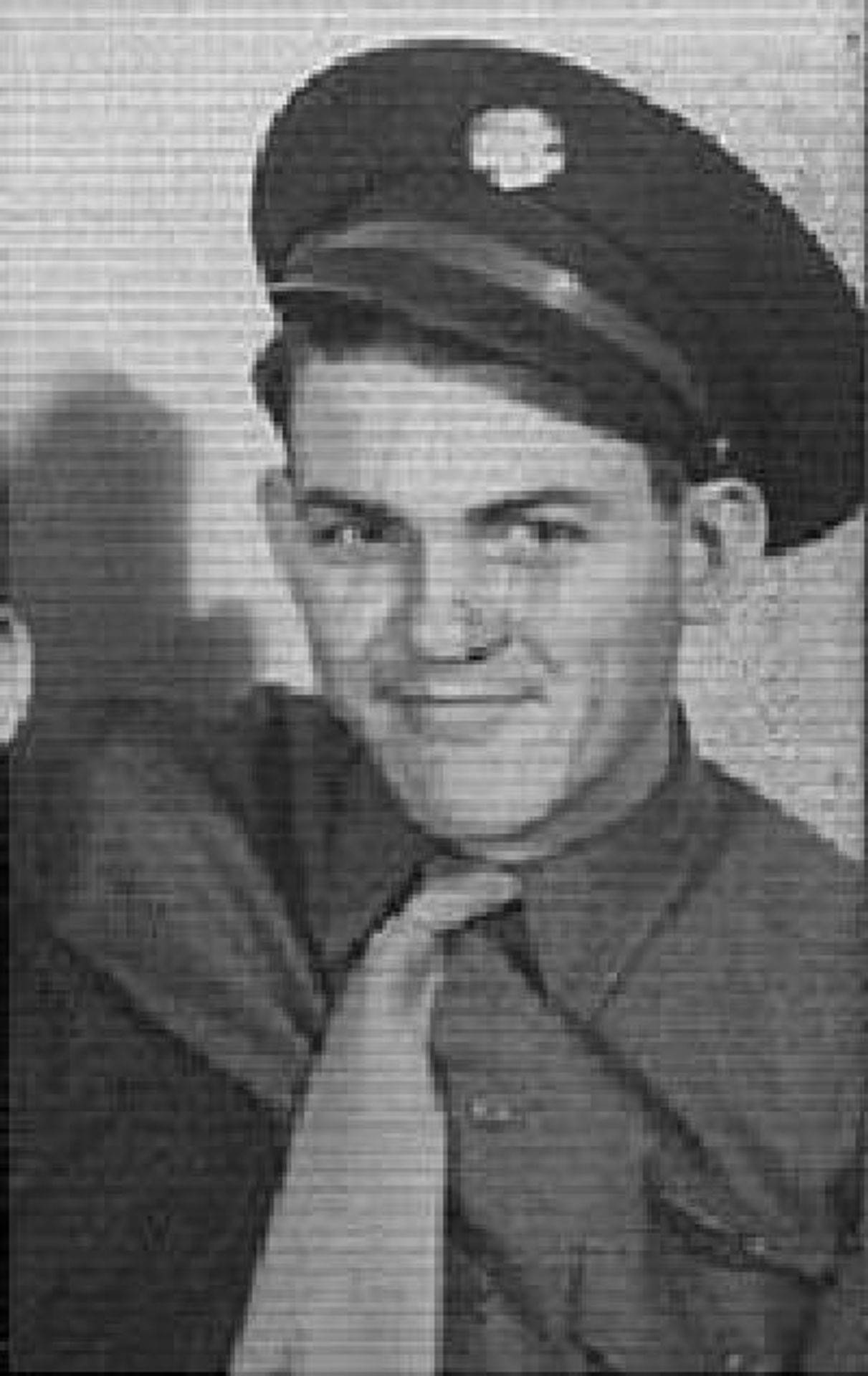
The 14 March mission involved an attack upon a marshalling yard at Holzwickede, on the eastern fringe of Dortmund. However, there was a major reduction in the assigned number of aircraft even before the bombers took off, and said shortfall was put down to one airman’s lapse in concentration; moreover, the individual concerned was no combat rookie.
By this date S/Sgt. Jack L Pettyjohn, Waist Gunner [pictured left], had become a 753BS combat veteran with 32 missions under his belt. Around 0845 he arrived at his assigned bomber, B-24J-1-FO 42-50555 J4:A Baby Shoes, and moved to his position in the waist to carry out the standard checks on his starboard mounted machine gun. The oil buffer and feed space were first to be examined, then he disassembled the weapon and corrected the feed before charging it with the cover up. The cover was then closed down and examined to see if it was all right. During this time the Sgt. was also engaged in conversation with two airmen, one of them T/Sgt. Lloyd Brown. Perhaps due to this distraction, Pettyjohn critically omitted to ensure he had checked the feed and equally critically failed to ensure the ammunition was not over the belt holding pawl.
Parked to the right and some 50 yards further back from Pettyjohn’s bomber was B-24J-145-CO 44-40118 J4:S We’ll Get By in the charge of Lt. R A Brown, and whose crew were similarly engaged in pre-flight checks. Gathered in the waist were Sgts. William K Clark (LW), Sabino M Alverado (RW), and Lawrence Turner (Eng). Outside, in front of No. 1 engine was one of the ground crew, Sgt. Arthur M DeLaurelle; he had just returned from Tech Supply, having secured a part for the engine requested by Sgt. Jerome J Peltier (Crew Chief). Suddenly the relative calm of the morning atmosphere was shattered by the pistol crack of several discharged rounds. DeLaurelle turned round as he heard the bullets ricochet off the hardstand and shower his legs with cement chips before they advanced to impact with his aircraft around the upper-left bomb bay; he further noted the sole gun capable of directing the fire #118’s way was the right waist mount manned by Pettyjohn on #555.
The three crew members inside had no clear idea from where the gunfire had originated, but quickly decided to vacate their bomber. Turner noticed smoke issuing from the bomb bay and yelled at Peltier up on the wing to “get the Hell out of here!” The crew chief took the advice, but his next reaction was to go and inspect the bomb bay to confirm the source of the smoke; having confirmed that at least one of the incendiary bombs was on fire, he and Turner ran clear before stopping two passing Jeeps and urging the drivers to fetch the fire trucks to the scene. By the time a fire tender had been alerted and arrived at the dispersal the fire had taken hold in the bomb bay, cockpit, and No. 2 engine.
T/5 George M Vanway (2016 Engineer Fire Fighting Platoon) entered the bomb bay and managed to extinguish the flames, but further efforts to control the blaze in the cockpit were thwarted by the noxious content of the fire extinguishing fluid that soon forced him to withdraw into the open in order to avoid passing out. At that point he was advised to give up, since the fire had an uncontrollable hold and there was an attendant danger of the bomb load exploding. Capt. William D Lemkowitz (Ordnance) and an assistant also attended the scene, but almost immediately the Capt. decided that the situation was hopeless. On his advice, a Tannoy broadcast ordered all 753BS personnel within the area to evacuate to a minimum distance of 660 yards followed by the withdrawal of the fire tender and ambulance.
No sooner had all personnel departed the area when the first violent explosion rent the air, followed by two further blasts that left little or nothing remaining intact on the stricken B-24. In addition, no less than nine adjacent aircraft received varying degrees of damage, [four] of which were listed as “major” in scale. The cause of the accident was traced to Sgt. Pettyjohn’s machine gun – or rather his lapse in procedure. The ammunition was over the belt holding pawl, and therefore when he charged the gun five rounds were fired.
At briefing Lt. William A Kash (Gunnery Officer) had made his usual statement on this matter. He said that gunners were instructed [that] no rounds must be charged into or through their guns until the aircraft were airborne. Only after a thorough pre-flight of their guns should the ammunition belt be placed into position so that one round could be placed over the belt-holding pawl; thereafter the guns would be stowed and would not be unlimbered until the aircraft had become airborne. In his testimony Pettyjohn said “I don’t know whether or not my finger was on the trigger. It is reasonable to conclude it probably was, since on clearing my gun immediately after the burst I discovered one round in the breech. My check revealed no circumstances that would have caused the burst without a pull on the trigger.”
The incident, unfortunate as it was, at least caused no fatalities or injuries, but it again emphasised the need for full concentration on the job at hand, no matter how experienced the airman in question was.
Excerpt from Liberators Over Norwich (pp 244-245)
The following is a list of aircraft receiving damage on 14 March 1945 and the extent of damage to each airplane.
Aircraft Damage – Major
B-24JAZ-155-CO 44-40273 J4 T HOWLING BANSHEE
1. Both elevators burnt.
2. Large holes in both rudders.
3. Skin buckled aft of left waist window.
4. Holes in both vertical fins.
5. Large and small holes in fuselage.
6. Pilot’s window out.
7. Holes in upper skin of both wings
8. Tail light damaged.
9. Radio compass antenna damaged.
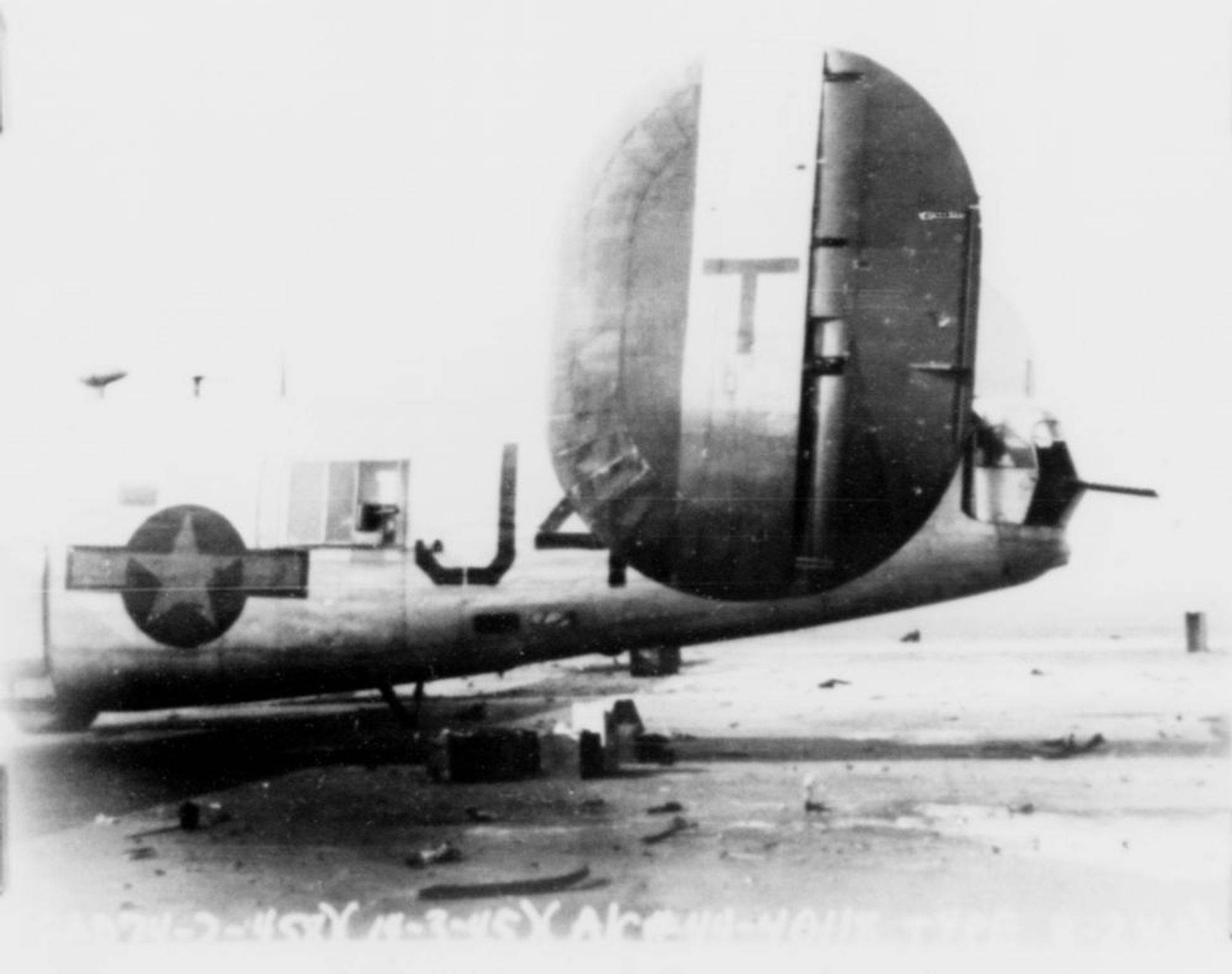
B-24J-65-CF 44-10602 J4 E TEN GUN DOTTIE
1. Right side of nose wrinkled.
2. Several holes on right side fuselage
3. Right waist window cracked.
4. Co-pilot’s side window cracked
5. Right aileron damaged.
6. Bombardier’s window busted.
7. Right and left fins damaged. Right rudder and fin to be changed. Rudder sprung and brace on fin cracked.
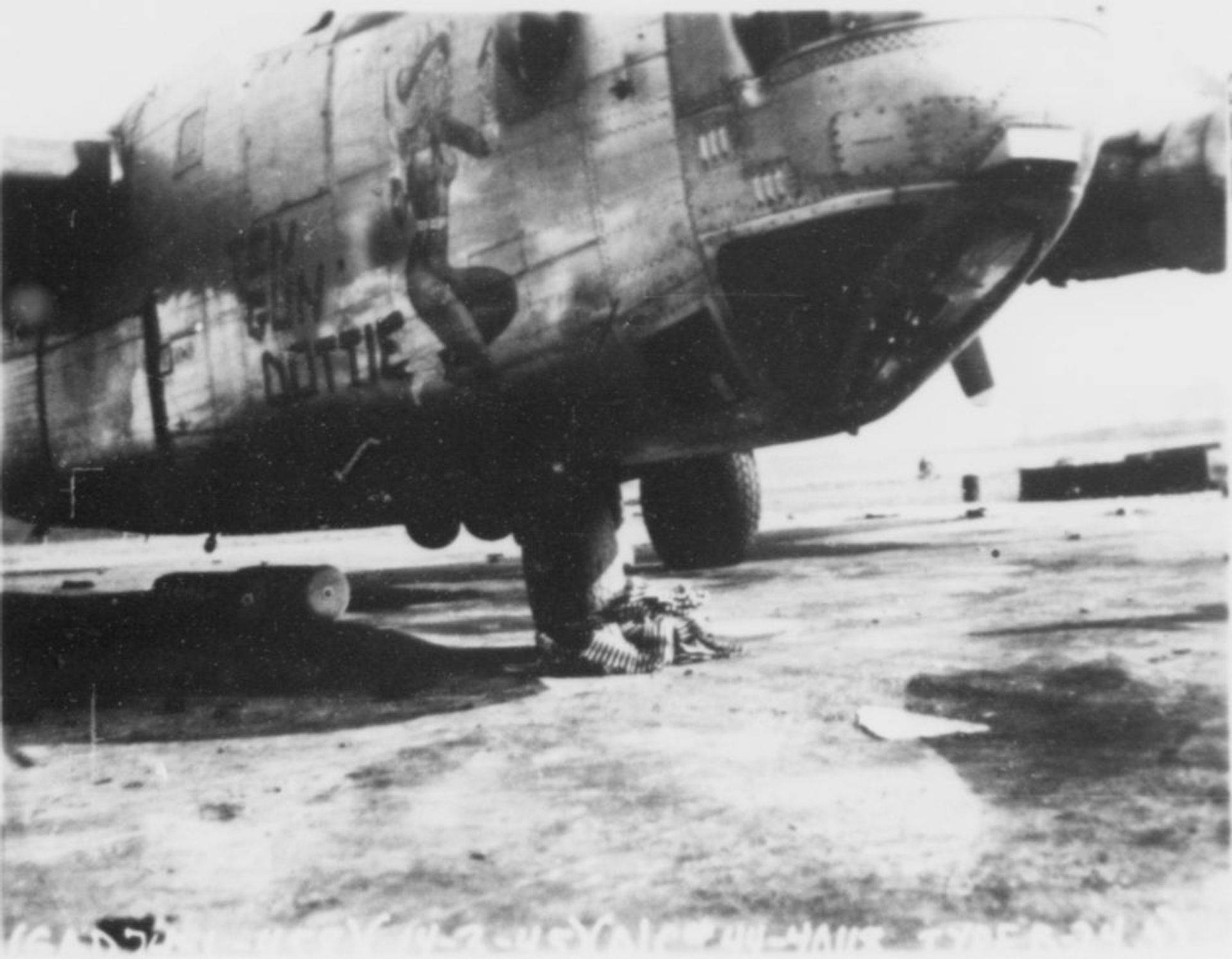
B-24J-1-FO 42-50555 J4 A BABY SHOES [pictured, right]
1. Bombardier’s window cracked
2. Co-pilot’s window cracked.
3. Several holes in right side fuselage.
4. Right nose wheel door damaged.
5. Right side of fuselage, back of waist window wrinkled
6. Right vertical fin damaged, also left fin.
7. Right rudder warped, also left rudder.
8. Nose wheel flat.
B-24JAZ-155-CO 44-40285 J4 H TABLE STUFF
1. Nose turret dome cracked.
2. Hole in right die nose wheel well.
3. Fuel transfer system cut.
4. Holes on right side of fuselage
5. Electrical wires cut.
6. Right and left stabilizer and rudder damaged.
7. Skin above transfer system cut.
8. Hole through wrap cowling on #1 engine.
9. Rear co-pilot’s window cracked.
10. Hole through right aileron.
(Photos: Tony Reccia)
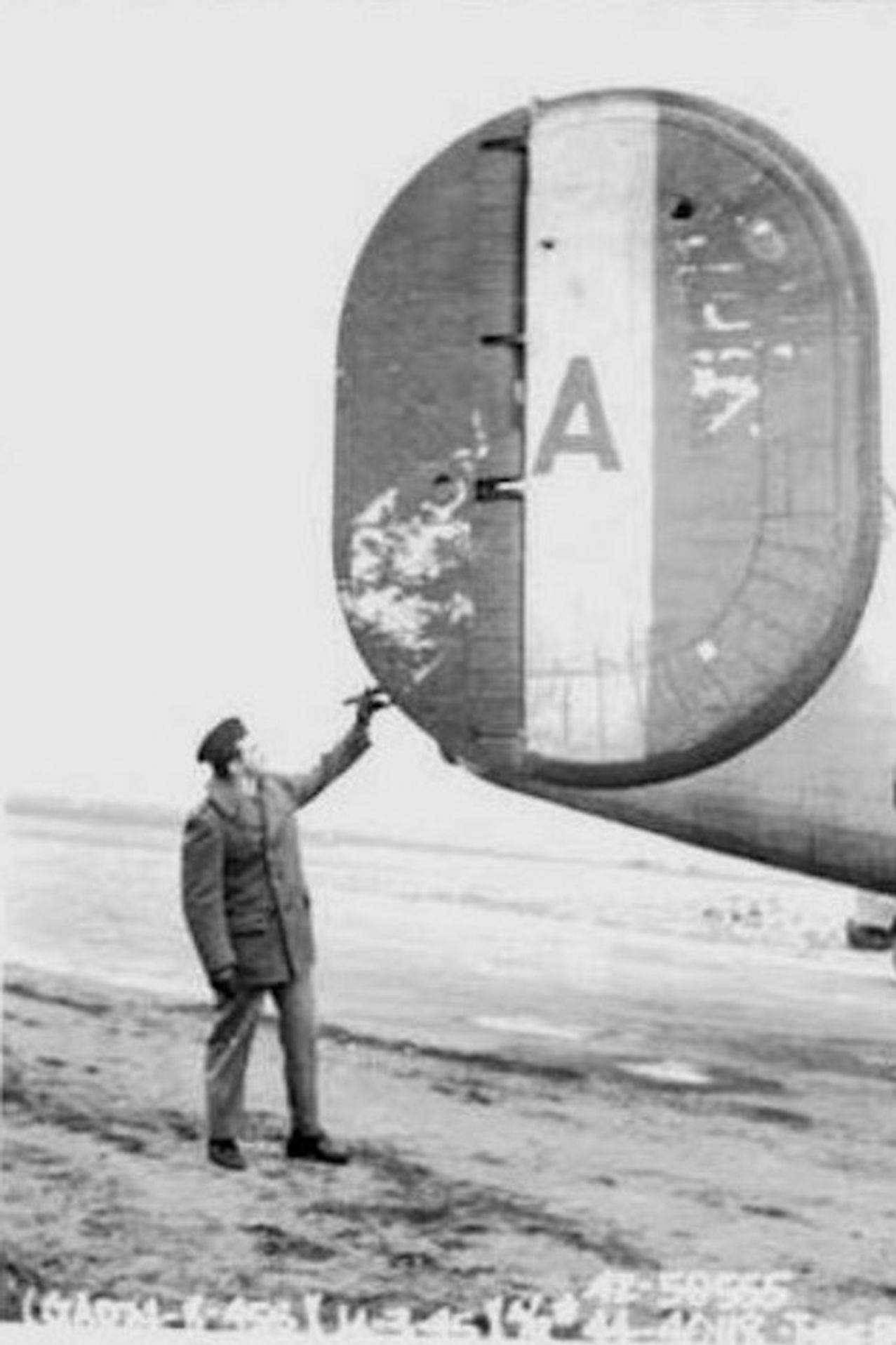
Aircraft Damage – Minor
B-24JAZ-155-CO 44-40287 J4 J BACHELOR’S BEDLAM
1. Hole at station 3.2.
2. Repair wiring at station 3.2.
3. Replace #1 prop, hole in blade.
4. Hole in left aileron.
B-24J-100-CO 42-100408 J4 I LADY LUCK / THE BEAST
1. Hole in leading edge of right wing, main spar damaged. Wing to be replaced.
2. Right aileron damaged.
3. Hole in leading edge of horizontal stabilizer
4. Bombardier window shattered.
B-24J-5-FO 42-50912 J4 D THE TRAVLIN BAG
1. Left waist window broken.
2. Skin buckled under left waist window.
B-24JAZ-155-CO 44-40277 J4 P MISS USED
1. Skin buckled under left waist window.
2. Hole in Astro Dome.
3. Tail turret dome broken.
4. Right aileron warped and damaged.
5. Hole in fuselage near co-pilot’s window.
B-24J-140-CO 42-110141 J4 U BREEZY LADY
1. Large hole in left rudder.
2. Horizontal stabilizer has several large holes.
3. Holes in both vertical fins.
4. Large holes in tail part of fuselage.
5. Large holes in right wing. Tail to be removed to repair hole.
6. #4 cowl flap anf propeller damaged.
7. Aerial mast torn from skin top of fuselage.
Aircraft Destroyed
B-24J-145-CO 44-40118 J4 S WE’LL GET BY
Totally destroyed.
